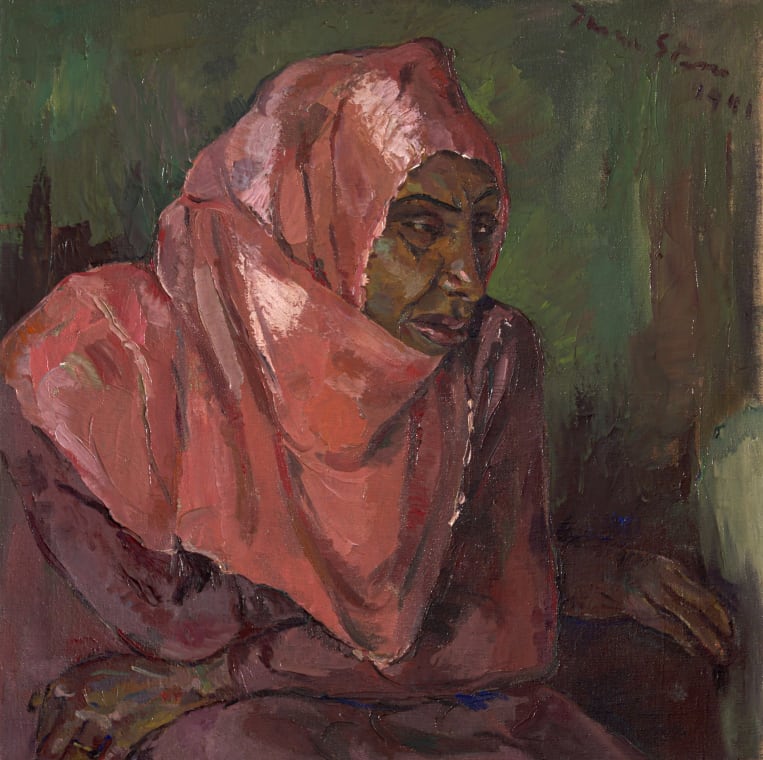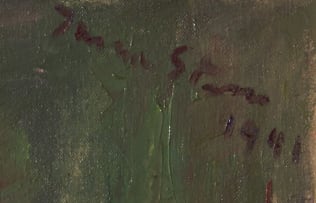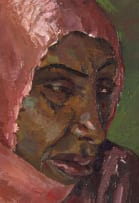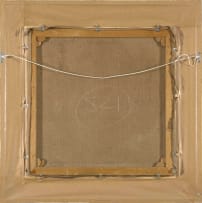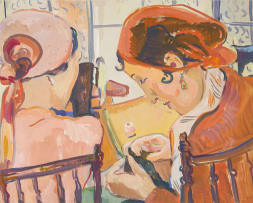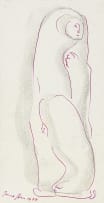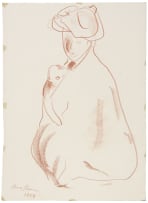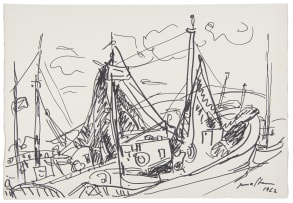Irma Stern: Time|Line
Live Virtual Auction, 8 June 2022
Irma Stern: Time|Line
About the SessionIncl. Buyer's Premium & VAT
About this Item
signed and dated 1941
Notes
The early 1940s forms part of Stern's important middle years, when she was at the height of her powers as an artist. In 1940, she exhibited recent paintings from her first work trip to Zanzibar. Shown in Cape Town and Johannesburg, this now-celebrated body of work attracted generally favourable reviews and sales. In 1941, the year she painted this lot, Stern participated in a New Group exhibition in Cape Town, the only instance of her participation in the activities of this reformist group of painters. She also sold two works to the Johannesburg Art Gallery thereby bolstering its incipient collection of her work.
Around this time she also assisted Joseph Sachs, a Lithuanian Jewish émigré with a doctorate in English literature from the University of Zurich, on the publication of her first and only South African monograph published during her lifetime. Although mired in essentialisms,Irma Stern and the Spirit of Africa usefully encapsulates the formal attributes of works from a period now considered her artistic high point. Sachs lists her impasto technique, greater use of perspective and tonal modelling, as well as pursuit of beauty as facts of Stern's mature style.
"The colour harmonies are more restrained and there is sonority and power in place of shrillness and stridency her earlier work," states Sachs. "There is less tendency towards distortion: she
seems to have abandoned the abstract and advanced to a more representational viewpoint: her early romantic approach has yielded to a more realistic presentation while her mellower outlook seems to prompt the use of softer and less aggressive lines."1 This summary provides a guide for appreciating Stern's three-quarter portrait of a seated woman wearing a pink hijab and pensive expression.
A number of art historians have used the phrase "descriptive expressionism" to broadly characterise the style of the sumptuous portraits, nudes and flower studies Stern began producing from the mid 1930s onwards, when the influence of Max Pechstein receded.2 Formal evolutions aside, some aspects of Stern's practice remained immutable. "People and places - people belonging to places - were her constant stimulations," wrote Heather Martienssen in an important posthumous appraisal.3 While the statement would seem to refer to the Zulu, Xhosa, Swazi, Congolese, Rwandan and Zanzabari peoples Stern depicted after making determined travels, it is also true of the Cape Muslims - or colloquially Malays - Stern routinely depicted throughout her career.
The breadth of this output is substantial. It encompasses portraits of brides, flower sellers, farm workers, minstrels, musicians and - as is unusually specified in the title of this lot - a psychic. "Stern's oeuvre of 'Malay' paintings is among the best-known South African images of Muslims in the twentieth century," writes poet and scholar Gabeba Baderoon. "Even with their familiar
themes, Stern's paintings are formally suggestive … Stern's paintings are attentive to clothing, pose and setting and the interplay between these elements. She produces memorably complex variations on the traditional themes of the picturesque 'Malay'."4 Of particular note in this composition is her lavish use of pink. The colour features prominently in many of Stern's depictions
of Cape Muslim and Zanzibari women, cultures with a shared Muslim inheritance by way of the Indian Ocean.
1. Joseph Sachs (1942) Irma Stern and the Spirit of Africa, Pretoria: JL Van Schaik Ltd, page 38.
2. See for example Marion Arnold (1996) 'Some Early Irma Stern Work', in Stephan Welz,Art at Auction in South Africa, Johannesburg: Art Link, page 21.
3. Heather Martienssen (1968) 'The Art of Irma Stern', in Lantern: Journal of Knowledge and Culture, December, Vol. 18, page 25.
4. Gabeba Baderoon (2004) Oblique Figures: Representations of Islam in South African Media and Culture, unpublished doctoral thesis, University of Cape Town, pages 75 to 76.
Provenance
Strauss & Co, Cape Town, 6 February 2012, lot 521, with the title Portrait of a Woman Wearing a Pink Hijab.
Literature
Joseph Sachs (1942) Irma Stern and them Spirit of Africa, Pretoria: JL van Schaik, illustrated in black and white on page 71.
Sean O'Toole (2020) Irma Stern, Africa in Europe, European in Africa, Munich, London & New York: Prestel, illustrated in colour on page 112.
